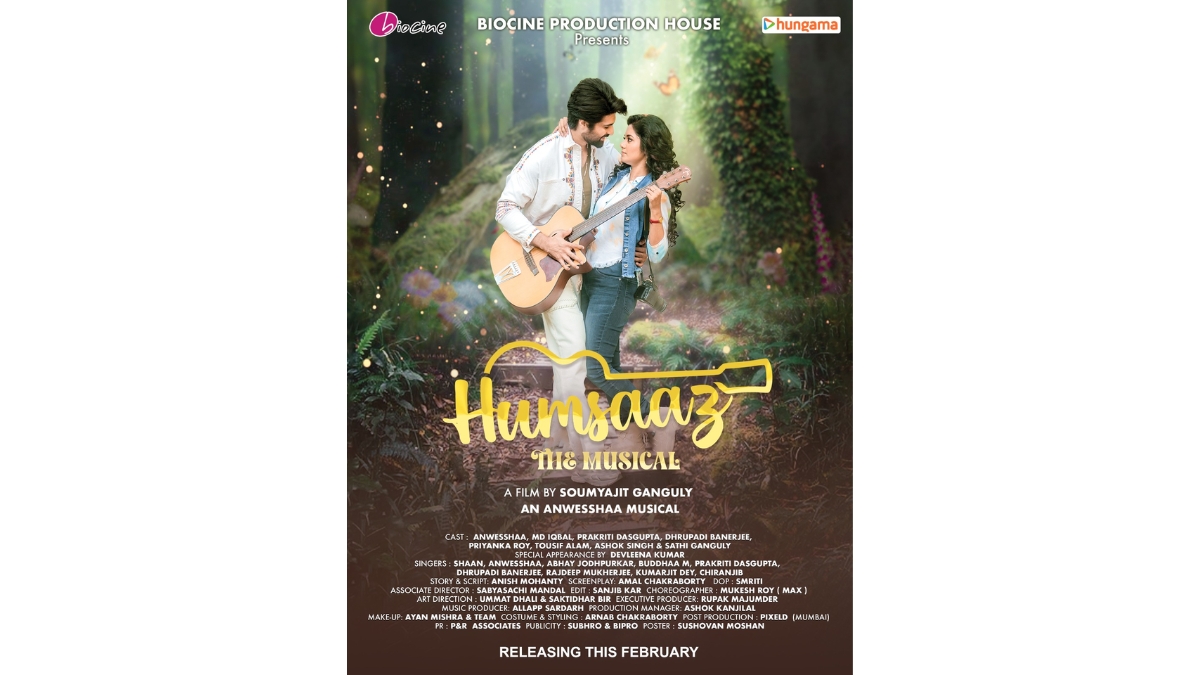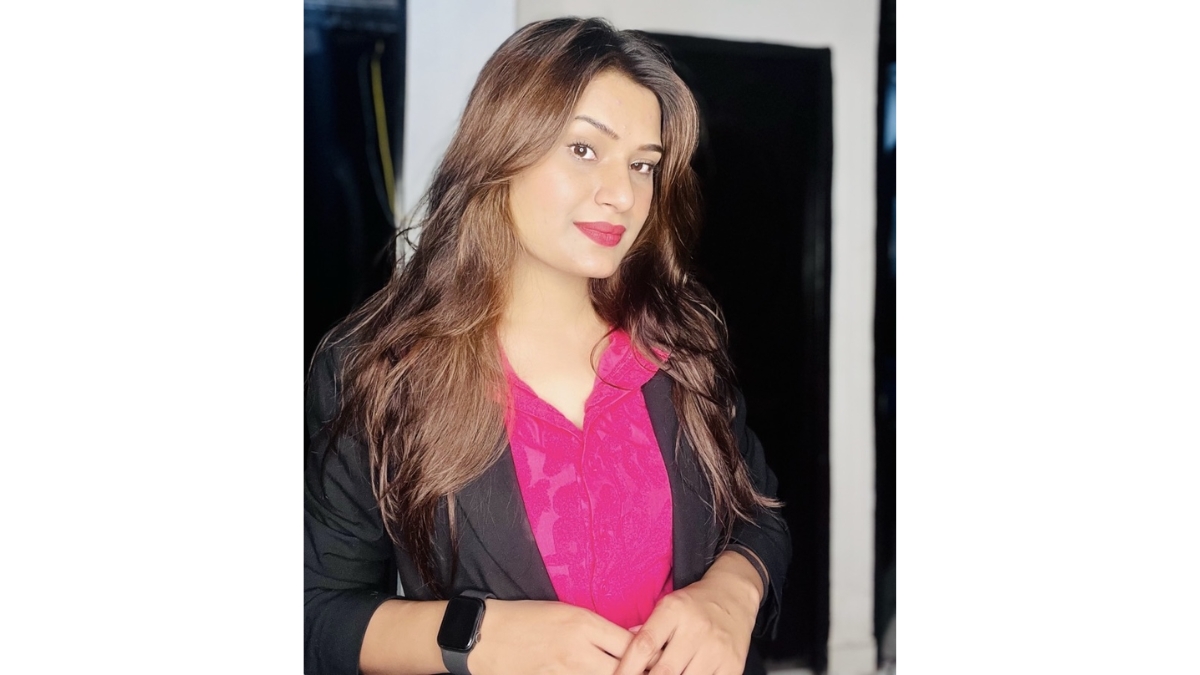How AR Rahman’s orchestra is tuning lives

Sunshine Orchestra imparts free musical training to children from under-served socio-economic backgrounds. It was Rahman’s deep spiritualism that led to the founding of the orchestra in 2008. He firmly believes that the deepest chord that strikes every human being and dissolves all boundaries is music, which, he says, can change lives. The Sunshine Orchestra is a manifestation of that belief.
Franklin began training in the double bass, a giant stringed instrument from the violin family that is played in an upright position. “I did not choose the double bass. It chose me,” he recalls. “I had neither heard nor seen the instrument before.” Ten years of strenuous practice at the Sunshine Orchestra helped him play the instrument well.
In 2022, the Royal Birmingham Conservatoire offered one string player from the orchestra an opportunity to do a year-long post graduate diploma in Instrument Performance at its college. Franklin applied and was selected. The excitement of being chosen by one of the world’s best-known music schools was, however, shortlived when he saw that the course fee was over ₹30 lakh. His family did not have such money. But there was hope—he was told that the college offered scholarships to deserving students, and immediately applied for one. He was asked to record and send in an audition.
Franklin had prepared well for the audition. He shook off the emotion and played the compositions, Dittersdorf concerto No. 1. and Vivaldi’s Sonata No. 1. He bagged the scholarship. His challenges, however, did not end there. He still had to pay for the visa and flight tickets. “Yes, we will get it done,” said Rahman, after he heard of Franklin’s achievement and predicament. He paid for the visa and tickets. “Study well. No bad habits. Come back and teach others,” was Rahman’s sage advice.
Franklin is now surviving the UK’s winter and learning music along with the best in the world. “I would not be here without Sunshine Orchestra,” he tells Mint.
As it did with Franklin, the Sunshine Orchestra has transformed the lives of scores of others, who have learnt music, begun performing professionally and earn handsomely today.
Apart from creating musicians, Rahman has a larger vision with this initiative—to build India’s own symphony orchestra and put the nation on the global map. Fifteen years on, he has begun delivering on the first part of his vision.
Initial dissonance
View Full Image
In its early days, the Sunshine Orchestra did not pan out the way Rahman wanted. Students were selected and taught but were not learning well. The first batch recalled how a concert involving the orchestra was organized in 2009, with Rahman attending. Halfway through the show, he got up and walked out without saying a word. The performance was below par, and there were plenty of mistakes.
Rahman realized that the initiative needed a different approach. It was then that he reached out to Srinivasa Murthy, a music arranger and conductor he worked with. He played a video of the students performing and asked Murthy if he could help train them. “What the children played was quite bad. At that point in my life, I did not want to start teaching beginners,” says Murthy. “I declined.”
When Murthy shared this incident at home with his family, his daughter asked, “What if your teacher had said that same thing?” Chastened, he went back to Rahman the next day and agreed to spearhead the Orchestra. That was the turning point.
Murthy brought in the badly needed structure, systems and process that the orchestra needed. “There was no connection between the students and the teachers and that was the first thing I set out to correct,” recalls Murthy, who has since retired. Things began to change slowly and so did the learning outcomes. “Murthy sir brought in a more serious approach,” says Vaijayanthi Ravindrakumar, one of the early students of the Orchestra. She plays the cello, a stringed instrument.
Initially, the students came for an hour in the morning before school and at times, for an hour in the evening. As the students completed their schooling, some opted to come in full time and pursue their college education through correspondence courses.
The dropout rate was a big problem. One batch started with 40 students and finally ended with just 10. When students reached the 10th standard and 12th standard, their parents began exerting pressure on them to focus on studies and this led many to stop showing up. “Most of the students at the Sunshine Orchestra were first-generation students and their parents were keen that their children get a proper education. They did not understand that music was also a life skill,” says Murthy.
The students recall that Murthy often arranged tuition in subjects they were weak in, at his own expense. “Once I did not have the money to pay for my monthly bus pass; it was Murthy sir who paid for me,” says David Kareem, who plays Double Bass, choking with emotion.
At the same time, Murthy was very strict. He demanded discipline and made the students practise regularly. “Put your soul into the music,” he would constantly say and drove the students to practise for hours. “There were days we would cry after long hours of practice and lots of scolding,” recalls violinist Nandini Anbhazhagan. “Had we not done that then, we would not be where we are today,” she adds.
Special treatment

View Full Image
Rahman has always had a soft corner for the Sunshine Orchestra. He visits and interacts with the students often and ensures that they have the instruments. While abroad and shopping for musical instruments, he would always ask if the orchestra needed anything.
“Once when he was on a US tour, he brought me a trumpet that professionals use,” says 19-year-old Angelin Naveena S. She had started playing the trumpet in her school band and took a strong liking to the instrument. Naveena faced discrimination as the trumpet was seen as a male instrument since it takes a lot of stamina to play it. At times she felt low, but thanks to the encouragement of her father, she decided to break the glass ceiling.
Knowing this part of her story, Rahman also encouraged her. He made her record for him. She did a solo recording for the song Veeranae in the Tamil film Mamannan, which Rahman composed the music for. At the music launch function, he asked her to come to the front of the stage and play her solo bit.
Naveena is now in the final year of a diploma course in Western Music Performance at KM Music Conservatory, Rahman’s music college. “They offered the first year free for me. I was told that if I studied well, I would get the second and third year free too. I passed the first and second year with distinction,” she says. The course fee for that diploma is ₹7 lakh per year. In fact, all Sunshine Orchestra students have the option to study free of cost at KM Conservatory provided they excel.
Recording for the legend

View Full Image
Like Naveena, many Sunshine Orchestra students now routinely record for Rahman. “We were initially nervous recording for Rahman sir. He is a perfectionist and there is no scope for error. Murthy sir made things easy for us by taking us to these recordings before and making us just sit and watch. We knew what to expect,” says A. Dinesh, who plays the viola, a stringed instrument that is slightly larger than a violin. Sunshine Orchestra is the first choice for Rahman these days when he records a song or does the background score for a film.
Even this did not come easily. When Rahman started using Sunshine Orchestra students, seasoned cine musicians protested fearing the loss of their livelihood. Rahman, who has always been open to giving opportunities to newcomers, was in no mood to listen. He personally ensured that all the students became members of the union representing the cine musicians. By doing so, they got the right to record music for films. That shut up the opposition.
While recording for the music legend, they learnt a lot. “Go as deep as possible into the music is what sir says always,” says violinist Vignesh U, leader of the Sunshine Orchestra. He has recorded a solo for the Tamil film Bigil. He also played solo in the title track of Navarasa, a Tamil OTT series created by Mani Ratnam.
“He appreciates good work and expects uniqueness. He tells you frankly if it is not good, but he seldom gets angry,” says another student. Today, Sunshine Orchestra students record for many composers, including Ilayaraja, Thaman S, Anirudh Ravichander, and MM Keeravani, who won an Academy Award for the film RRR.
Rahman also has the orchestra perform at his live concerts, both in India and abroad. In 2016, while part of Rahman’s Malaysia tour, the Sunshine Orchestra became the first to play Indian classical music at Petronas Towers. That same year, they played at the United Nations headquarters in New York as a tribute to the legendary Carnatic vocalist M.S. Subbulakshmi. They were also part of a music tour by the late S.P. Balasubrahmanyam in Malaysia and Singapore. “I use Sunshine orchestra as often as I can in my concerts. They are great, extremely hard working, and on top of things. It is a small but very effective string section,” says music composer and renowned drummer Ranjit Barot.
Expanding the orchestra

View Full Image
Initially, the Sunshine Orchestra had just stringed instruments (violin, viola, cello and double bass). A brass ensemble (trumpet, french horn, trombone and tuba) was added in 2016 and an English trombonist, Lisa Caroline Sarasini, who has performed with many professional orchestras, brass bands and other music groups, was brought in as a teacher. “I decided to take up this unique role as it gives students skills and experience they wouldn’t have otherwise had. I believe the world of music is open to everyone,” says Sarasini.
The Sunshine Orchestra is now looking to start teaching woodwind instruments (flute and clarinet). A full orchestra typically has strings, brass, woodwind and percussion (piano, xylophone, drums, gongs and chimes) instruments.
In 2019, Rahman visited Nagaland as chief guest of the annual Hornbill festival. While there he went to an orphanage in Kohima and was impressed by the choir’s performance. This led to the opening of the Sunshine Orchestra’s Nagaland Chapter. Over 20 students, aged between 8 and 11, now learn music there. The orchestra has also launched an outreach programme where senior students go out and teach other children. Around 40 students are now being taught the violin and cello.
Professionals
The first and the second batch of students from Sunshine Orchestra have turned professional and are busy recording for leading composers, reality music shows and live concerts. They earn anywhere between ₹5 lakh and ₹7 lakh a year doing so. “I am not sure how much I would have earned if I had chosen any other profession. But what I am certain of is that it would not have given me this satisfaction,” says Vignesh, who was a school topper in 12th Standard.
They love the travel and the chance to perform across the world. “In any other profession, I don’t think I would have had the opportunity to work with some of the most talented artistes in the world,” says Deepa S, who plays the cello. All of them thank the Sunshine Orchestra for transforming their lives. “Rahman sir showed us the way and Murthy sir showed us how to walk,” sums up Vaijayanthi.

Atul Tiwari is a seasoned journalist at Mumbai Times, specializing in city news, culture, and human-interest stories. With a knack for uncovering compelling narratives, Atul brings Mumbai’s vibrant spirit to life through his writing.





